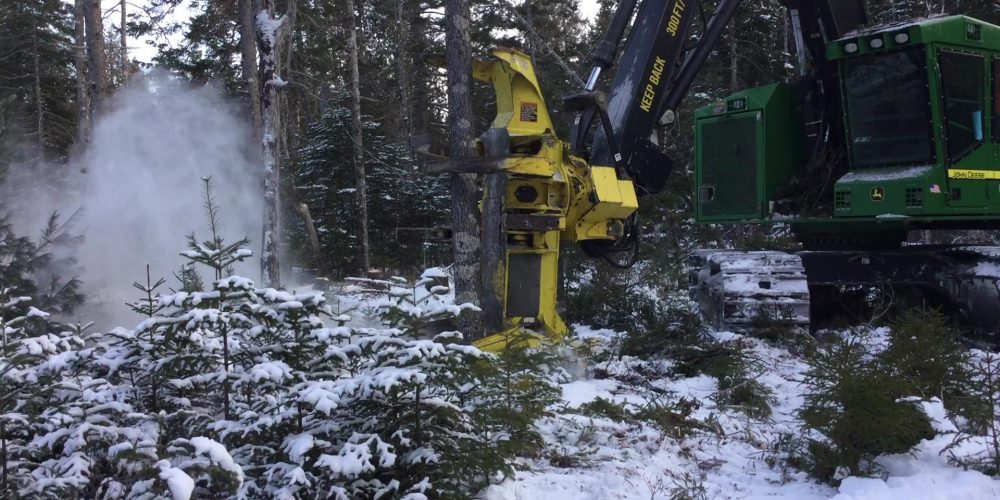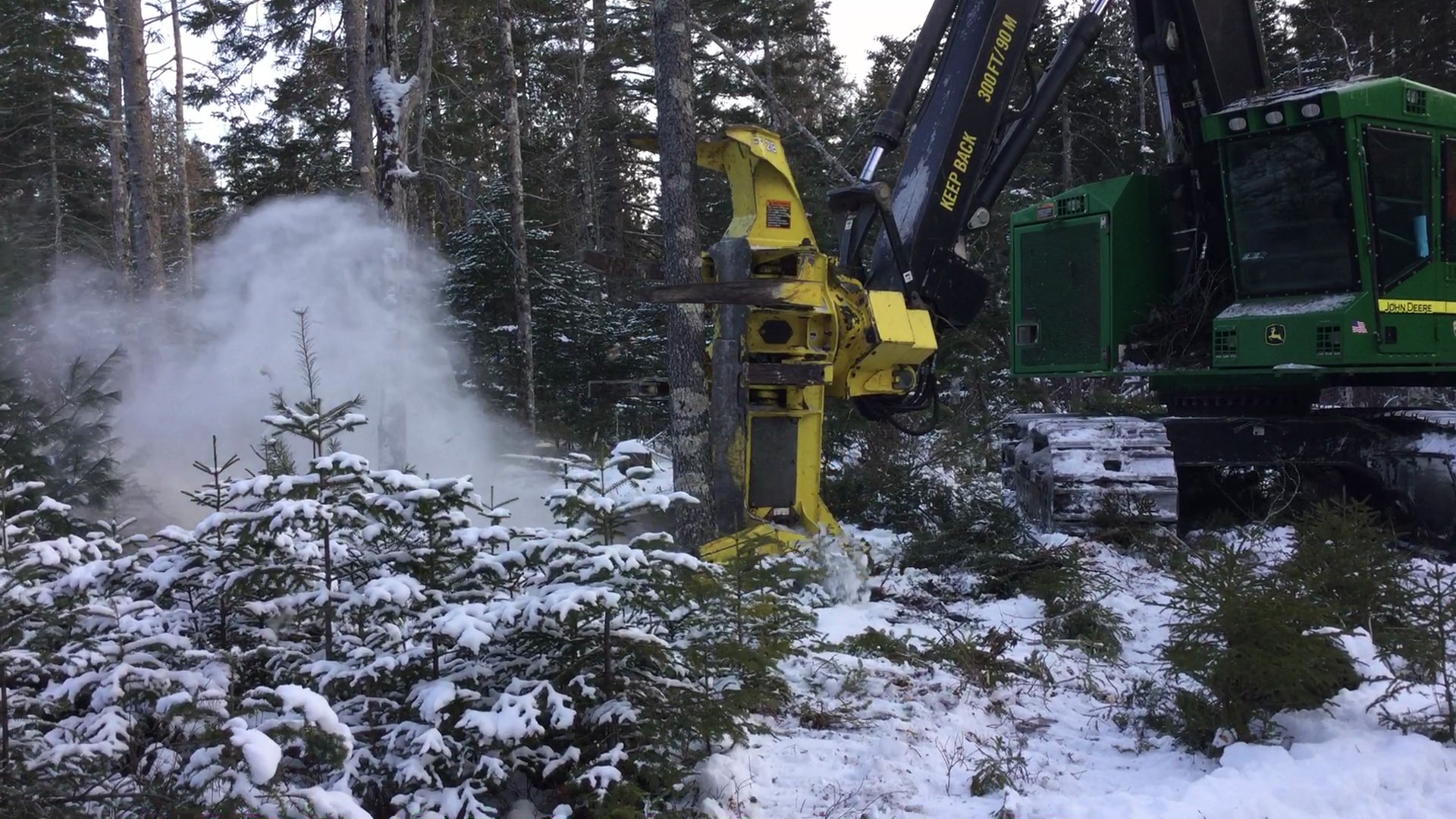Tree length logging is the most complex timber harvesting system we use. It consists of several specialized pieces of equipment that each perform a single phase of the logging operation but work together to complete the task. The logging operation begins with the feller buncher, which fells trees and places them into bunches. Feller bunchers are large machines that can cut, heft and maniplulate multiple trees at once and place them into bunches. These bunches enhance extraction, the next step in this method of harvesting. Extraction is accomplished using a grapple skidder, which hooks on to large bunches of whole trees and drags them to the landing. Once at the landing a delimber removes the branches, creating tree-length logs. Next, a slasher bucks the trees into sawlogs and pulpwood depending on the targeted market.
Landings are the nerve center in a tree length logging operation, sufficiently large enough to accommodate the following:
Tree-length landings may require considerable post-harvest treatment to remove the concentration of slash and to rehabilitate soils. These operations are best suited to extensive harvest areas where most or all of the trees are to be removed. Examples include clearcuts, seed tree harvests, and shelterwood harvests.
The system works best when soils can withstand repeated heavy traffic, the terrain is gentle, the harvest blocks are large, and where most of the trees are being removed. Landowners can reduce the negative aspects of this method by having these operations take place only on dry or frozen ground, gentle slopes, and on soils that can tolerate nutrient removal.
There is a risk of site degradation with tree length logging. Whole tree skidding concentrates nutrient-rich slash at the landing rather than distributing it over the harvest area. This can impact long-term soil fertility on nutrient-poor sites. The skidder operator must also exercise caution while transporting whole trees to minimize damage to residual trees.









